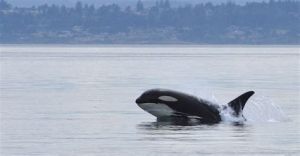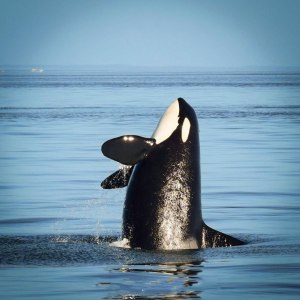
On December 4, the Committee on the Status of Endangered Wildlife in Canada (Cosewic), a group of scientific experts, classified both Canada’s caribou and its monarch butterfly populations as endangered. “Caribou are, sadly, very sensitive to human disturbances, and we are disturbing caribou more and more,” said committee member Justina Ray. “These stressors seem to be interacting in complicated ways with rapid warming in the North.”
The committee’s report notes that: “Many of the great northern caribou herds have now fallen to all-time lows, and there is cause for concern that they will not rebound in the same way they have before.” The group is responsible for classifying wildlife species at risk of extinction, and recommending potential protective actions to the Canadian government.
In order to determine whether caribou herds were at risk, Cosewic examined two different caribou populations: the tundra herd, deemed to be “threatened,” as well as the smaller population of Torngat Mountain caribou which dwell in northeastern Canada, and which were found to be at an even greater risk of extinction. This group was thus labelled “endangered,” and was noted to be facing “imminent” extinction. The report also highlights both habitat encroachment, due to increased forestry and mining, and Arctic global warming as grave threats to Canadian caribous’ continued existence. This October the World Wildlife Fund (WWF) rang alarm bells over Canadian caribou herds’ rapid decline over the past thirty years, and the committee’s findings sadly lend support to this conclusion.
In the same report, Cosewic classified monarch butterflies as endangered, noting that the “remarkably tiny wintering grounds where monarchs congregate continue to be chipped away by habitat loss.”
These migratory creatures regularly fly 4000km south from Canada to Mexico to remain warm as winter approaches. The committee strongly recommends that the butterfly’s habitat in Canada, the United States, and Mexico, all be proctected to ensure the insects have a place to rest each step of their migration.”Otherwise, monarch migration may disappear, and Canada may lose this iconic species,” it concluded.
Lending support to this call, this June, 200 American, Mexican, and Canadian scientists, artists, and academics appealed to the leaders of the three nations to ban illegal logging and mining in the Mexican reserve where monarchs outlast the winter. They also called for a ban on pesticides used to diminish milkweed, which serves as the only food source for monarch caterpillars. For its part, Cosewic called out the use of an herbicide used on genetically modified corn and soybean, which has been detrimental to monarchs as well.
Actions such as those recommended by the committee will go a long way in helping preserve two Canada-dwelling species that rely heavily on diminishing habitats.

Source: “Canada caribou and monarch butterfly ‘endangered’”. Phys.org. 6 December 2016.
Wildlife Conservation Film Festival
Biodiversity & Wildlife Crime Conference
Christopher J. Gervais, F.R.G.S.
Founder & CEO
Christopher@WCFF.org
www.WCFF.org
Facebook.com/WCFForg
Twitter: @WCFF_org
Twitter: @CJGERVAIS
Instagram: @wcff_org
Vimeo.com/wcff
dailymotion.com/WCFF1
LinkedIn: Wildlife Conservation Film Festival

















